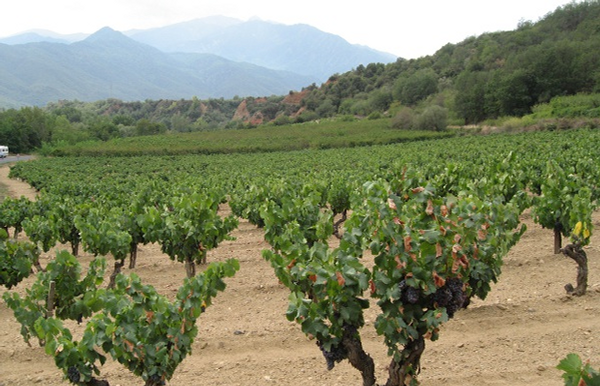- Pacific Islands Climate Change Cooperative |
- Use Cases |
- Mediterranean Ecosystems
Mediterranean Ecosystems

Explore related items…
Where are the areas most at risk from climate change?
Since climate change has become an important issue to be addressed by all agencies and conservation entities, Molly Cross from Wildlife Conservation Society and a group of her colleagues have developped a straightforward framework to address climate change issues in conservation planning (Cross et al. submitted). As a first critical step, a "feature of interest or concern" (species, ecosystem or its function, area) is chosen to start considering the climate change challenges. Klausmeyer and Shaw (2009) chose Mediterranean Ecosystems as a feature of interest and concern because of their striking plant diversity and their correlation with a unique climate.They note that Mediterranean Ecosystems represent "2% of our planet's land area containing 20% of the known vascular plant diversity with the second lowest level of land protection of all terrestrial biomes".
Once the "feature" has been identified, a management objective has to be clearly delineated to be able to evaluate when the objective has been met. In this example, Klausmeyer and Shaw (2009)'s objective was to identify which Mediterranean regions of the world needed the most immediate conservation action i.e. a prioritized list of where should new protected areas and connectivity pathways be established.
The Sierra Club has a catchy phrase for recommended action for conservation: protect the best, remove the stress, restore the rest . In the case of the Mediterranean systems, the first order of business was to find out where "the best" was located. Following Cross et al. (submitted)'s approach, the third step after identifying a feature and defining a practical management objective was to put together a conceptual model for the system of interest. Klausmeyer and Shaw (2009) defined the Mediterranean climate extent using climate indices defined earlier by Aschmann (1973). They then analyzed 136 projections of future climate from the World Climate Research Programme's (WCRP's) Coupled Model Intercomparison Project phase 3 (CMIP3) multi-model dataset (Meehl et al. 2007). They came up with a map of the projected area of Mediterranean climate extent in the future with various levels of confidence with regard to their regional expansion or contraction. One of the areas with the most projected change, was identified as the west coast of Australia where the climate is projected to remain characteristic of Mediterranean lands in only 10% of the existing protected areas while 17% of the current Mediterranean climate will definitely shift to a brand new state.
The third step in Cross et al.'s framework is to identify intervention points and management actions. In this as in all other cases, slowing the rate of climate change by reducing the amount of greenhouse gasses in the atmosphere would give all species more time to adapt to change. Klausmeyer and Shaw also identified specific local actions that can be done to help species to adapt to climate change in areas most at risk, namely western Australia. Conservationists in this area should be encouraged to establish new protected areas, consider farmland areas for restoration, and modify current land management practices to minimize the future impacts of warming.
The final three steps in the Cross et al.'s framework involve evaluating the feasibility of suggested actions, prioritizing and implementing, and monitoring the effectiveness of the actions. These steps are best done at the local scale, so they were not covered in the Klausmeyer and Shaw analysis. The evaluation step should engage landowners, provincial and national government representatives, conservation organizations, and farmers, to agree on a feasible plan of action. The implementation phase will require significant funding and possibly policy change in order to be effective. Once the plan gets implemented it is also essential to revisit the plan as new data are collected and the site is closely monitored to evaluate the plan efficacy.
Co-author: Kirk Klausmeyer
References: Klausmeyer K.R. and M.R. Shaw (2009) Climate Change, Habitat Loss, Protected Areas and the Climate Adaptation Potential of Species in Mediterranean Ecosystems Worldwide. PLoS ONE 4(7): e6392.doi:10.1371/journal.pone.0006392
Photo credit: Dominique Bachelet (Conservation Biology Institute)
- Citation
- Dominique Bachelet. 2010. Mediterranean Ecosystems. In: Data Basin. [First published in Data Basin on Sep 13, 2010; Last Modified on Oct 8, 2021; Retrieved on Jan 3, 2026] <https://databasin.org/articles/9331e58cb84d4064bfe4cef9e9b902ab/>
About the Author
Dominique received her Master’s degree in 1978 in Lille (France) and her Ph.D. in 1983 from Colorado State University with a thesis focused on biogeochemical cycles in the shortgrass prairie. In 1984 she went to U.C. Riverside as a postdoc simulating nitrogen fixing shrubs in the Sonoran desert then...


